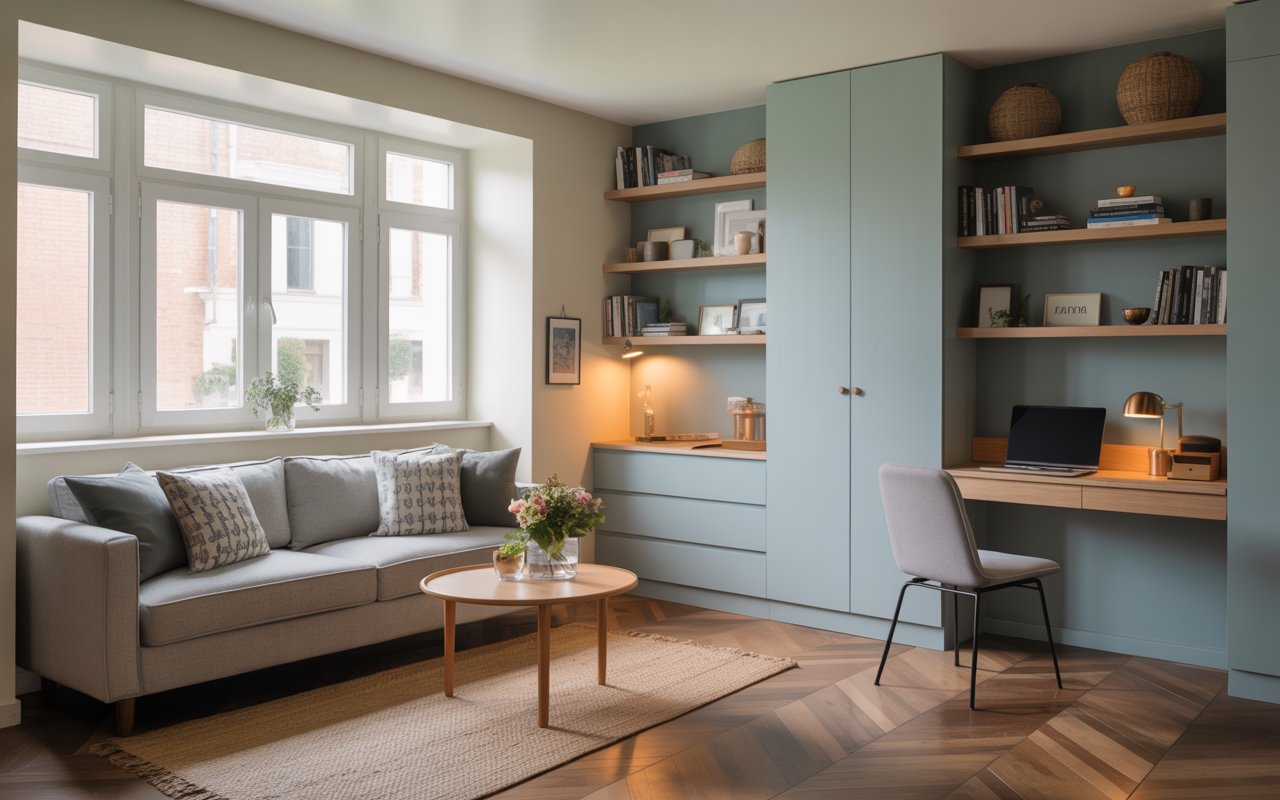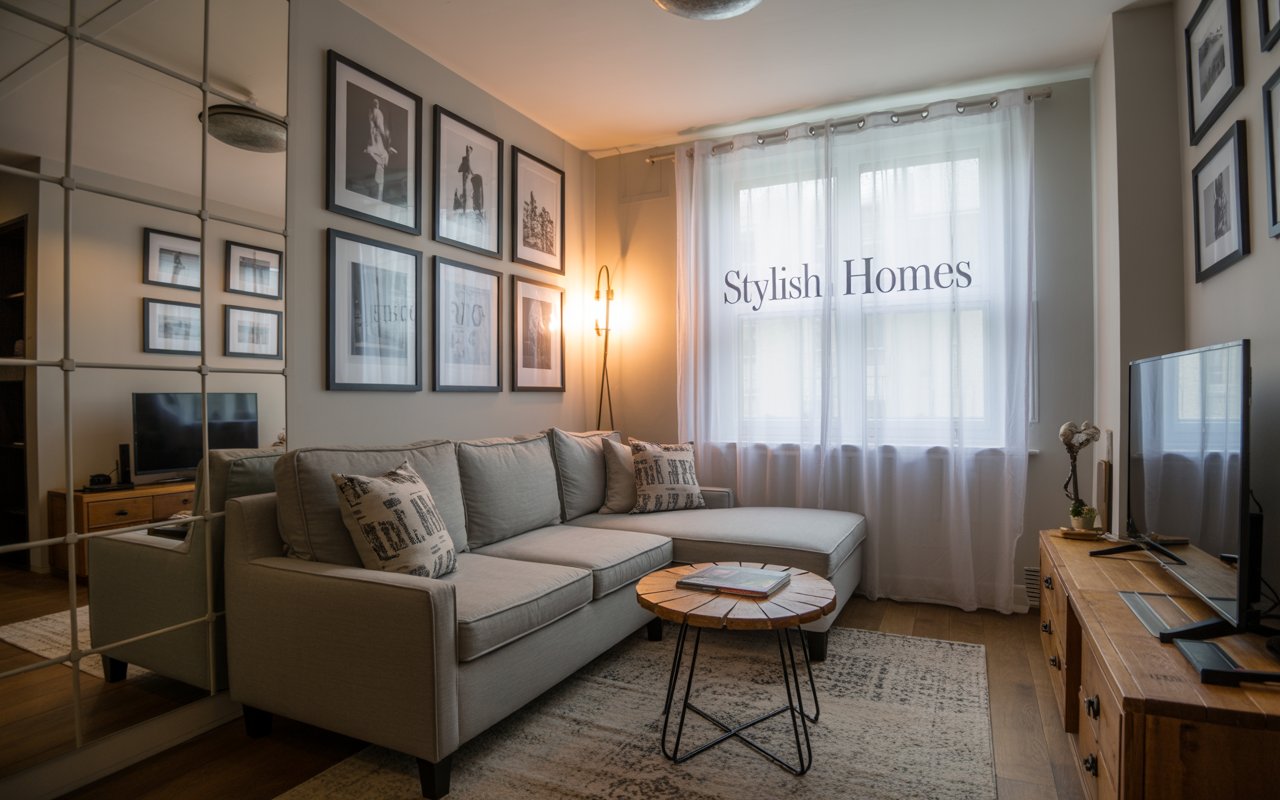How Residential Interior Designers Transform Small Spaces into Stylish Homes

In the era of urban living, small spaces are becoming the norm rather than the exception. Whether it’s a studio apartment, a compact flat, or a tiny house, making the most of limited square footage is a challenge many homeowners face. This is where Residential Interior Designers for Small Spaces play a crucial role. Their expertise can turn even the most cramped quarters into elegant, functional, and stylish living spaces.
In this blog, we’ll explore how these specialists work their magic and share insights into the design techniques, smart furniture choices, and strategic planning that help maximize space without compromising style.
The Growing Demand for Residential Interior Designers for Small Spaces
With rapid urbanization and rising real estate prices, more people are opting for smaller homes. However, small doesn’t have to mean uncomfortable or dull. The demand for Residential Interior Designers for Small Spaces is growing because homeowners increasingly realize the value of expert design in making compact living enjoyable and aesthetically pleasing.
These professionals bring a blend of creativity, technical knowledge, and space optimization skills to deliver results that exceed expectations.
Key Strategies Interior Designers Use to Transform Small Homes
1. Smart Layout Planning
Every square foot counts in a small home. Interior designers begin by understanding the lifestyle, needs, and routines of the occupants. This helps them design layouts that promote seamless movement and efficient space usage.
For example, open-plan living, merging the kitchen, dining, and living areas, is a popular approach to create a sense of spaciousness.
2. Multipurpose and Modular Furniture
One of the hallmarks of interior design for small spaces is modular and multipurpose furniture. Designers often incorporate:
-
Sofa-cum-beds
-
Foldable dining tables
-
Wall-mounted desks
-
Storage ottomans
-
Pull-out pantry units
These solutions provide functionality without occupying unnecessary space.
3. Vertical Storage Solutions
When floor space is limited, the walls come to the rescue. Residential interior designers optimize vertical space using:
-
Tall bookshelves
-
Ceiling-height kitchen cabinets
-
Floating shelves
-
Wall-mounted organizers
These additions help reduce clutter and keep the space open and organized.
4. Light and Color Psychology
Colors and lighting can significantly influence how large or small a room feels. Interior designers use:
-
Light, neutral color palettes to make rooms appear bigger
-
Mirrors to reflect light and create depth
-
Layered lighting (ambient, task, and accent) to highlight focal points and eliminate shadows
This visual trickery enhances the illusion of space and creates a cozy, stylish atmosphere.
5. Customized Built-ins
Residential Interior Designers for Small Spaces often work with carpenters or modular companies to build custom furniture. Built-in wardrobes, under-bed storage, and corner seating with hidden compartments are examples of customized solutions that save space and serve multiple purposes.
Room-by-Room Interior Design Tips for Small Homes
Living Room
Designers choose sleek furniture with legs to keep the floor visible and maintain a sense of openness. Neutral tones, a statement rug, and clever lighting can make a small living room feel inviting.
Bedroom
Wall-mounted lamps, platform beds with storage, and mirrored wardrobes are commonly used to make bedrooms both functional and beautiful.
Kitchen
In compact kitchens, U-shaped or L-shaped layouts with smart corner units, pull-out shelves, and tall cabinets are key. Light-colored cabinetry and under-cabinet lighting also help.
Bathroom
Even tiny bathrooms can feel luxurious. Designers use glass shower enclosures, wall-mounted vanities, and open shelving to maintain space while offering utility.
Benefits of Hiring a Residential Interior Designer for Small Spaces
-
Space Optimization: Designers have a trained eye for maximizing every inch of available space.
-
Personalized Aesthetics: They tailor designs to your taste and lifestyle, ensuring the space reflects your personality.
-
Increased Property Value: Professionally designed homes often have better market appeal and higher resale value.
-
Time and Cost Efficiency: Designers help avoid costly mistakes, save time, and ensure proper planning and execution.
-
Stress-Free Execution: From layout design to furniture sourcing and decor styling, they handle it all—so you don’t have to.
Common Mistakes Homeowners Make (and How Designers Avoid Them)
-
Over-furnishing: Designers select compact, scaled furniture rather than oversized pieces.
-
Ignoring vertical space: Experts make use of wall height and ceiling space.
-
Poor lighting: They layer lighting to brighten dark corners and highlight key features.
-
Random color choices: Designers follow a cohesive color palette to maintain flow.
-
Cluttered decor: They prioritize minimalism with meaningful accents over crowding.
Real-Life Examples of Small Space Transformations
Studio Apartment in Delhi
A 450 sq. ft. studio was transformed using a foldable Murphy bed, custom wall storage, and a monochromatic theme with mirrors. The result? A bright, multi-functional home that feels double its size.
1BHK in Mumbai
A 1BHK flat became a cozy family home with sliding partitions, modular kitchen units, and custom wardrobes. Designers used warm lights and pastel tones to create a calm vibe.
These examples show that even the smallest spaces can be elevated with the right design vision.
Final Thoughts
Small homes come with big possibilities. With the right planning, innovative furniture, and aesthetic finesse, Residential Interior Designers for Small Spaces can completely transform limited areas into functional, stylish, and enjoyable living environments.
Whether you’re renovating your current home or moving into a new compact space, investing in professional interior design can make all the difference. The right designer doesn’t just decorate a space—they redefine how you live in it.


